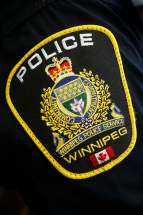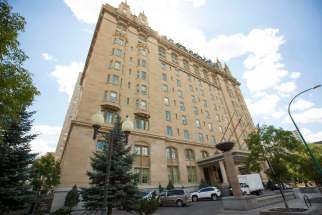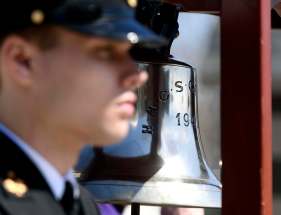School plan makes grade, except in funding
Read this article for free:
or
Already have an account? Log in here »
To continue reading, please subscribe:
Monthly Digital Subscription
$0 for the first 4 weeks*
- Enjoy unlimited reading on winnipegfreepress.com
- Read the E-Edition, our digital replica newspaper
- Access News Break, our award-winning app
- Play interactive puzzles
*No charge for 4 weeks then price increases to the regular rate of $19.00 plus GST every four weeks. Offer available to new and qualified returning subscribers only. Cancel any time.
Monthly Digital Subscription
$4.75/week*
- Enjoy unlimited reading on winnipegfreepress.com
- Read the E-Edition, our digital replica newspaper
- Access News Break, our award-winning app
- Play interactive puzzles
*Billed as $19 plus GST every four weeks. Cancel any time.
To continue reading, please subscribe:
Add Free Press access to your Brandon Sun subscription for only an additional
$1 for the first 4 weeks*
*Your next subscription payment will increase by $1.00 and you will be charged $16.99 plus GST for four weeks. After four weeks, your payment will increase to $23.99 plus GST every four weeks.
Read unlimited articles for free today:
or
Already have an account? Log in here »
Hey there, time traveller!
This article was published 30/07/2020 (1958 days ago), so information in it may no longer be current.
Education Minister Kelvin Goertzen’s detailed plan to return most Manitoba students to the classroom this fall is, in almost every way, a calculated public health risk. It’s not necessarily a bad thing.
Given the stakes, Goertzen had no choice but to assume some risk. The threat posed by continuing to keep schools mostly closed this fall is too great not to push the envelope just a bit.
This past spring, as schools were shuttered to deal with the rapid advance of COVID-19, we learned tough lessons about remote learning. Principally, we found out that although some students did not suffer in a remote-learning environment, many more did and for a variety of reasons.
As lessons moved online, and examinations were abandoned, many students dropped off the grid and stopped doing school work at home. The full effect of that phenomenon won’t be known until this fall when teachers find out who is behind and by how much.
Leaving children at home to learn also exposes more of them to a wide array of abuse — physical, sexual, psychological — that is often first detected by people within the school system.

Finally, there is an economic impact from closing schools, particularly for working parents of younger children who rely on the school system to provide child care during working hours.
Faced with those issues, Goertzen has done well to forge a plan for this fall, with a couple of exceptions.
First, the good parts.
The plan is reasonable in most of its protocols and flexible so school divisions and individual schools can design their own plans to meet provincial guidelines.
The plan features three threat levels: Level I, which is a full return to in-class education, to Level III, which is essentially a shutdown of schools like we saw in the spring. This allows for a rapid pivot from one threat level to another if there is an outbreak.
There are limits on the number of children in any one space in a school, and a firm requirement to maintain social distancing. That will mean while elementary schools and high schools with smaller student populations will be able to hold in-class lessons five days a week, other high schools with larger student numbers may only be able to go two days out of a six-day school schedule.
This may frustrate parents, but it makes sense given the variance in facilities and student populations. It would have been impossible to just demand that all students return.
There are some problems.
First and foremost, given that it was devised by Premier Brian Pallister’s government, it is unsurprisingly austere.
In the final analysis, what’s missing from Goertzen’s otherwise worthy plan is a sense that Manitoba is adopting a ‘better safe than sorry’ approach to reopening schools, where there is a responsible measure of over-compensation. That is the approach taken in other places.
Goertzen confirmed the province will provide $48 million — the savings achieved by shutting down the school system last spring — to fund specific measures needed to keep staff and students safe. That is a preposterously low number given the magnitude of this challenge.
There should be enough money to pay for all of the stickers, shields, separators, cleaning and hand-hygiene supplies and personal protective equipment that will be needed to ensure a safe return to school. Teachers, in particular, should be provided with access to a higher-level of PPE now that COVID-19 research has shown the virus poses a significantly higher airborne threat than previously thought.
As it stands, $48 million is only a fraction of the money needed to ensure schools are as safe as possible once students return. It’s a particularly galling figure given the Pallister government has profoundly underspent in most of its pandemic response programs.
In the final analysis, what’s missing from Goertzen’s otherwise worthy plan is a sense that Manitoba is adopting a ‘better safe than sorry’ approach to reopening schools, where there is a responsible measure of over-compensation. That is the approach taken in other places.
Concurrent with Goertzen’s announcement, Hockey Manitoba released a draft plan to re-start hockey in the fall. Although not required by public health regulation, Hockey Manitoba will require hand sanitizer on benches and penalty boxes, and mask use by coaching staff, off-ice officials and fans. It also requires that players arrive at the rink in their equipment to reduce exposure in locker-rooms.
None of the things that Hockey Manitoba has recommended are overlooked in Goertzen’s school reopening plan. But in tone and in language, Hockey Manitoba is communicating a willingness to go above and beyond the minimum. That is missing to some extent in the return-to-school protocols.
That is particularly true when it comes to issues such as non-medical masks. Unlike provinces such as Ontario, which has made mask use mandatory for older students, Manitoba will allow individual students and teachers to decide whether to wear a mask. Given that indoor spaces with tight quarters and wonky HVAC systems are considered an area of highest risk for COVID-19 transmission, it is odd that masks rated just a quick reference in Goertzen’s plan.
The minister deserves credit for sticking rigorously to his belief that “the best place for students is in the classroom.” Few Manitobans will disagree. What many may take issue with is a plan that seems to underreact at a time when a degree of reasonable overreaction is justified.
dan.lett@freepress.mb.ca

Born and raised in and around Toronto, Dan Lett came to Winnipeg in 1986, less than a year out of journalism school with a lifelong dream to be a newspaper reporter.
Our newsroom depends on a growing audience of readers to power our journalism. If you are not a paid reader, please consider becoming a subscriber.
Our newsroom depends on its audience of readers to power our journalism. Thank you for your support.









